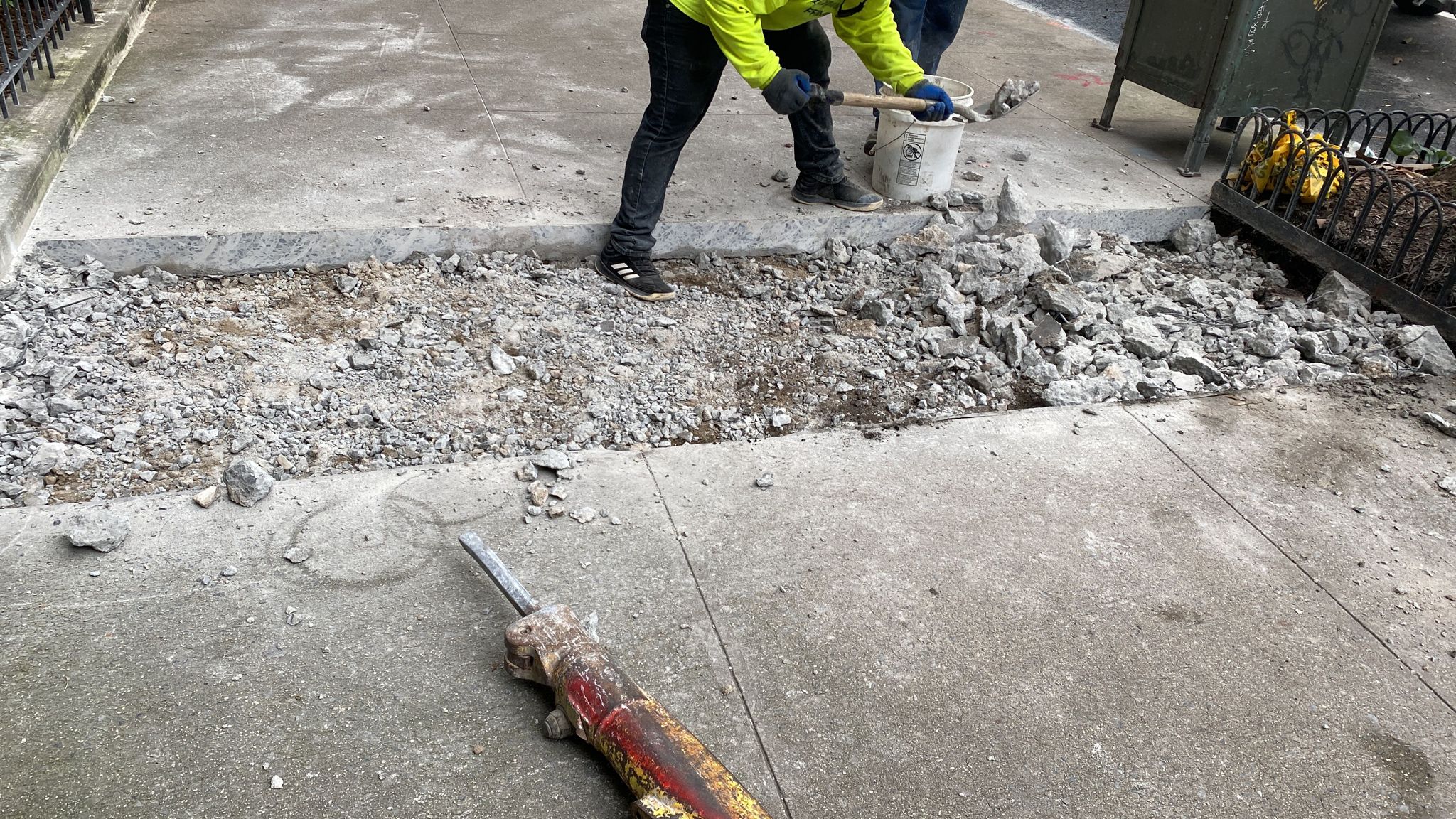
Common Reasons of Sidewalk Concrete Breakage
Concrete is a durable material to construct your sidewalks as compared to any other material. With its versatility in designs and different color options to choose from, a concrete surface can add aesthetic appeal to your property.
Despite being durable, concrete can degrade over time. One of the most common issues is concrete breakage, which can be cracks, uneven slabs, or even missing concrete slabs. All these issues can become major causes of trip and fall hazards among pedestrians.
Finding out the root cause of concrete breakage is essential so that you can address the issue promptly. Hiring professional experts like Eden Sidewalk Repair can be an effective choice for you to address these issues.
With years of experience, professional knowledge, and proper licensing, professional experts can provide reliable sidewalk repair services.
Shifting Ground
Soil beneath concrete can be a major reason why sidewalks might get damaged. The ground under sidewalks isn't static and can shift and settle due to various reasons. Here are two main reasons why this might happen:
Soil Erosion
Heavy rainfall or improper drainage can wash away the soil supporting the concrete. This loss of foundation can lead to cracks, uneven slabs, and even complete sidewalk collapse.
Clay Soil
Clay soils are particularly problematic. They shrink and swell with changes in moisture content. Changes in the clay can put stress on the concrete, causing cracks and unevenness to appear.
The Freeze-Thaw Cycle
Harsh weather conditions like UV rays and freezing cold weather can wreak havoc on concrete sidewalks. Here's how:
Freeze-Thaw Cycles
During freezing weather, moisture seeped through cracks in the concrete can freeze. As water freezes, it expands, putting pressure on the concrete and causing the cracks to widen. This repeated freeze-thaw cycle over time can lead to significant breakage in the concrete.
Heat and Expansion
Extreme heat can cause concrete to expand. While this expansion is usually minimal, it can increase existing cracks or create new ones over time.
Tree Root Damage
Tree roots grow and spread, searching for water and nutrients. Unfortunately, these roots can encounter sidewalks in their path. As the roots grow thicker, they can exert pressure on the concrete, causing it to crack and even rise up
Improper Construction
Sometimes, the problem lies in the construction of the sidewalk. There can be different flaws in the construction that can cause sidewalks to be damaged. Two of them are given below.
Insufficient Soil Compaction
Before pouring concrete, the soil needs to be properly compacted to create a stable base. If the soil isn't compacted enough, it can settle over time, leading to cracks and unevenness in the sidewalk.
Poor Drainage Design
Proper drainage is crucial to prevent water from accumulating around the sidewalk and eroding the soil beneath it. If the drainage is inadequate, the problems mentioned above with soil erosion can come into play.
Overload
Sidewalks are designed to handle pedestrian traffic, but the excessive weight of cars and other vehicles can damage them. Delivery trucks, construction equipment, or even parked cars that exceed the weight limit can cause cracks and even break the concrete.
Identifying Breakage and Taking Action
Early detection of sidewalk breakage is key. You can look for warning signs like hairline cracks, uneven slabs, or loose concrete pieces. If you notice any of these signs, it's important to address them promptly. Minor cracks can be sealed to prevent further damage, while more serious breakage may require professional repair or even replacement of the sidewalk section.
Preventive Measures to Save Sidewalks From Cracking
While some causes of sidewalk breakage are not preventable, there are steps you can take to minimize the risk of extensive issues:
- Ensure proper drainage around your sidewalks to prevent water from accumulating and eroding the soil.
- Plant trees a safe distance away from sidewalks, or choose species with less aggressive root systems.
- Regularly inspect your sidewalks for signs of damage and address them promptly.
- For more serious issues, consult a professional for proper repair or replacement of the sidewalk sections.
Conclusion
By understanding the common causes of sidewalk breakage and taking preventative measures, you can help ensure these essential pedestrian pathways remain safe and functional for years to come.
Remember, a well-maintained sidewalk not only benefits pedestrians but also enhances the overall aesthetic and value of your property.
Useful Guides:
De-Ice Your Sidewalks and Driveways Without Damaging the Concrete